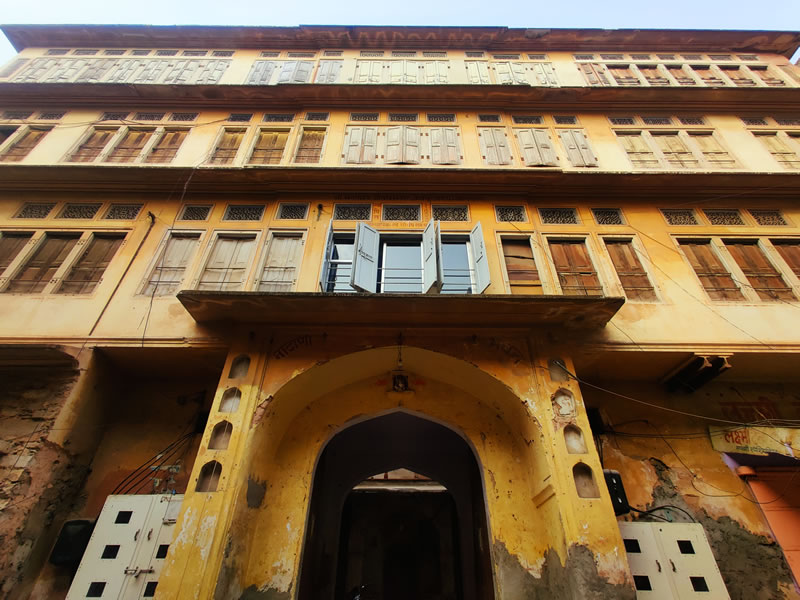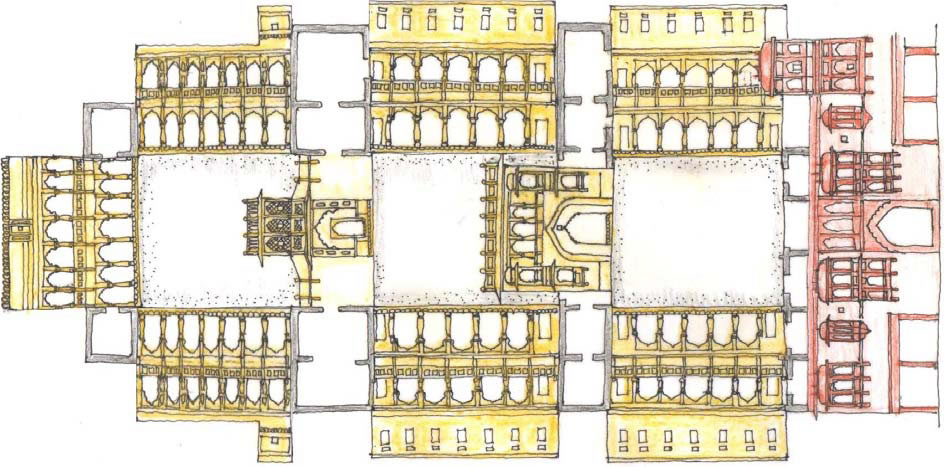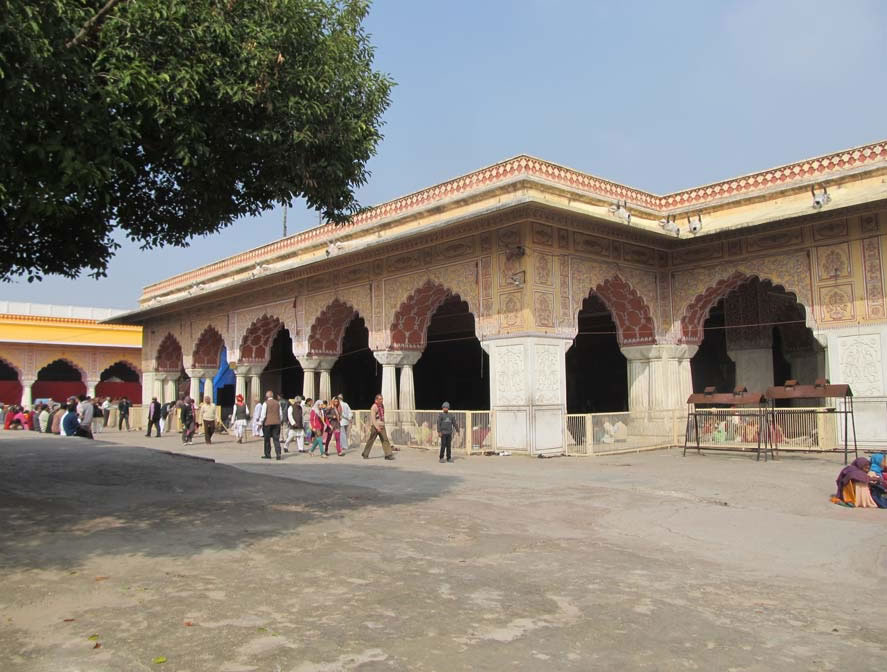Havelis
Havelis were the mansions of the medieval period, belonging to nobles who served the Rajput rulers. These Havelis were a symbol of the social status of the nobles. The city has many significant Havelis of the earlier nobles ranging from single courtyard Havelis like Nawab ki Haveli and Natani Haveli on the main commercial streets.

View of a Haveli in the Walled CIty
These residences are also the markers of the socio-cultural lifestyle of Jaipur. The Havelis range from a single courtyard house form to an assemblage of multiple courtyards, depending on the status of the owner and the number of family members.
At a cluster level, the generic pattern on the organization is similar to that at the town level. The naming of the cluster or the road is associated with the political or religious centre. A typical cluster will have a ritualistic centre with the temple or a well where the festivals are conducted, most often in the haveli of the most influential person in the cluster. There was also a political centre as the scale of the haveli marked the status of the owner. A haveli plan in Jaipur evolved around the centre, which is a courtyard, the core of the dwelling. As discussed earlier, the number of courtyards varied in Havelis and all the rituals are performed in these courtyards. Other parts of the haveli include tibialis, chaubaras or sal (central chambers), and separate sections for men and women called mardana and zenana, baithak (living space), puja or meditation space, parinda or water place, kothas or storage spaces. Chandni was an enclosed space on the terrace with high walls and no roof used especially during summers. The haveli facades also emphasized on the significance of the inner court and the centres and sub-centres in the façade were emphasized by the placement of the architectural elements. More emphasis is on the treatment of the facades of the inner courtyard.

Plan and elevation of Natani Ji ki Haveli, a triple courtyard haveli in the walled city
Haveli Temples
The city has numerous temples with Govind Dev temple as the centre. Historical records mention more than 600 temples in Jaipur. The streets of the walled city have a number of temples as significant landmarks. Even today, the important temples with shikharas can be observed at four most important locations in the city along the cardinal axis, i.e. Laxmi Narayan Temple at Badi Chaupar, Rama Temple at Choti Chaupar, Murli Manohar Temple at Ramganj Chaupar and the Kalka Temple opposite the main Sireh Deodhi entrance to the palace. Each mohalla (cluster of houses) has its own temple presided over by the deity most appropriate to their prosperity and protection. There are 187 other religious buildings including 3 mosques. Most of the remaining temples inside the walled city have been built in haveli style without shikharas.

View of Govind Devji Temple
